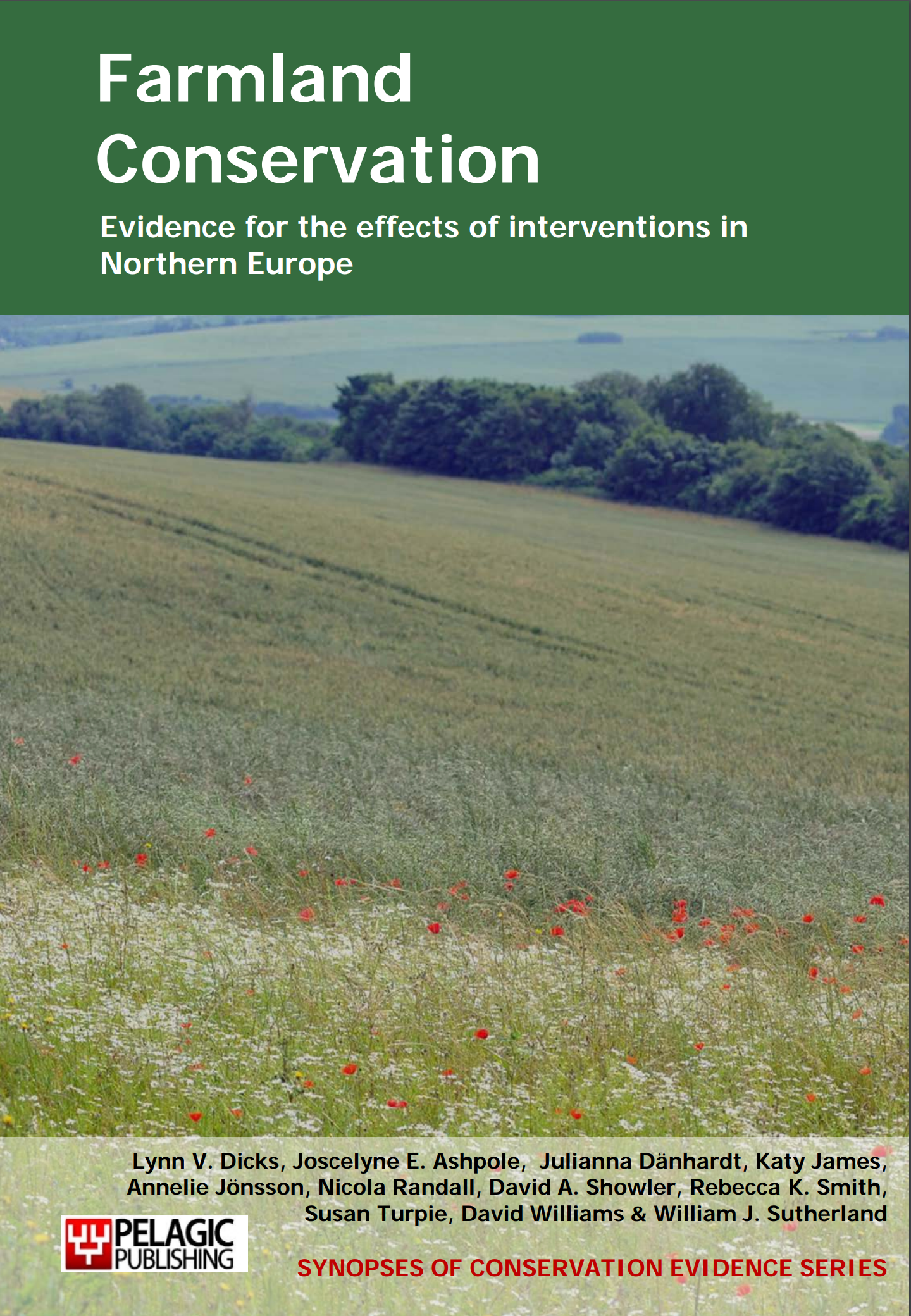Actions to conserve biodiversity
We have summarised evidence from the scientific literature about the effects of actions to conserve wildlife and ecosystems.
Review the evidence from the studies
Not sure what Actions are? Read a brief description.
Search for evidence
e.g. "frogs chytrid"
119 Actions found
Refine
Hide
119 Actions found
Download Actions
| 0 selected |
|
Order results by:
| Action | Effectiveness | Studies | Category | |
|---|---|---|---|---|
|
Manage heather by swiping to simulate burning Action Link |
Unknown effectiveness (limited evidence) | 1 |
|
|
|
Manage heather, gorse or grass by burning Action Link |
Awaiting assessment | 2 |
|
|
|
Create scrapes and pools Action Link |
Unknown effectiveness (limited evidence) | 6 |
|
|
|
Provide owl nest boxes (Tawny owl, Barn owl) Action Link |
Unknown effectiveness (limited evidence) | 5 |
|
|
|
Provide nest boxes for birds Action Link |
Unknown effectiveness (limited evidence) | 10 |
|
|
|
Provide or retain set-aside areas in farmland Action Link |
Beneficial | 54 |
|
|
|
Plant grass buffer strips/margins around arable or pasture fields Action Link |
Beneficial | 69 |
|
|
|
Manage the agricultural landscape to enhance floral resources Action Link |
Unknown effectiveness (limited evidence) | 1 |
|
|
|
Plant nectar flower mixture/wildflower strips Action Link |
Beneficial | 104 |
|
|
|
Plant new hedges Action Link |
Unknown effectiveness (limited evidence) | 8 |
|
|
|
Use traditional breeds of livestock Action Link |
Unknown effectiveness (limited evidence) | 5 |
|
|
|
Create skylark plots Action Link |
Beneficial | 11 |
|
|
|
Increase crop diversity Action Link |
Unknown effectiveness (limited evidence) | 4 |
|
|
|
Convert or revert arable land to permanent grassland Action Link |
Unknown effectiveness (limited evidence) | 8 |
|
|
|
Leave cultivated, uncropped margins or plots (includes 'lapwing plots') Action Link |
Beneficial | 20 |
|
|
|
Create open patches or strips in permanent grassland Action Link |
Evidence not assessed | 2 |
|
|
|
Plant cereals in wide-spaced rows Action Link |
Unknown effectiveness (limited evidence) | 5 |
|
|
|
Restrict certain pesticides Action Link |
Unknown effectiveness (limited evidence) | 2 |
|
|
|
Connect areas of natural or semi-natural habitat Action Link |
Unknown effectiveness (limited evidence) | 5 |
|
|
|
Plant wild bird seed or cover mixture Action Link |
Beneficial | 49 |
|
|
|
Provide 'sacrificial' grasslands to reduce the impact of wild geese on crops Action Link |
Unknown effectiveness (limited evidence) | 6 |
|
|
|
Sow rare or declining arable weeds Action Link |
Unknown effectiveness (limited evidence) | 2 |
|
|
|
Create rotational grass or clover leys Action Link |
Unknown effectiveness (limited evidence) | 3 |
|
|
|
Restore or create wood pasture Action Link |
Unknown effectiveness (limited evidence) | 2 |
|
|
|
Use scaring devices (eg. gas guns) and other deterrents to reduce persecution of native species Action Link |
Evidence not assessed | 1 |
|
Download Actions
| 0 selected |
|

Farmland Conservation - Published 2013
Farmland Synopsis
Watch this search
If you are familiar with RSS feeds, please click the button below to retrieve the feed URL:
RSS feed for this searchIf you are unfamiliar with RSS feeds, we would suggest reading this BBC article.
Unfortunately, due to the number of feeds we have available, we cannot provide e-mail updates. However, you could use tools such as Feed My Inbox to do this for you.
What are 'Individual studies' and 'Actions'?
Individual studies
An individual study is a summary of a specific scientific study, usually taken from a scientific journal, but also from other resources such as reports. It tells you the background context, the action(s) taken and their consequences.
If you want more detail please look at the original reference.
Actions
Each action page focuses on a particular action you could take to benefit wildlife or ecosystems.
It contains brief (150-200 word) descriptions of relevant studies (context, action(s) taken and their consequences) and one or more key messages.
Key messages show the extent and main conclusions of the available evidence. Using links within key messages, you can look at the paragraphs describing each study to get more detail. Each paragraph allows you to assess the quality of the evidence and how relevant it is to your situation.
Where we found no evidence, we have been unable to assess whether or not an intervention is effective or has any harmful impacts.





)_2023.JPG)














